Inhabited or remote controlled? Or talk about the present and future of towers for combat vehicles.
Disputes about whether combat vehicles should have habitable or remotely controlled towers do not subside. Despite all the sensors installed in the tower, is it necessary for the arrow to see the target directly?
Uninhabited towers capable of receiving large-caliber weapons became a reality, and the advantages and disadvantages of habitable and uninhabited towers are hotly debated by both military and manufacturers.
Technology towers developed rapidly in the last decade, especially the progress in a number of areas, ranging from sighting systems and ending with ammunition. Undoubtedly, the development will continue in the coming years.
One of the most noticeable trends is the use of uninhabited or remote technology on larger towers, which was previously the lot of relatively small remotely controlled combat modules (SDM).
The logic behind this is that an uninhabited tower is perhaps easier, allowing larger, remotely controlled models to be installed on smaller machines. In this case, the operator may have a greater lethal effect on the target, remaining under the protection of the machine body.
Staying inside
“Protection of one’s forces is still the only and most important element in active combat operations. Ensuring the safety of the soldier allows you to better focus on the combat mission, to conduct more thorough monitoring and assessment of the situation before its implementation, ”says Pamela Willgos, executive vice president of Kongsberg Protech Systems.
Norwegian company Kongsberg is best known for its DubSoft Protector, which was supplied in large numbers in the Stryker brigade of the US Army, although its larger medium caliber Protector MCT tower weighing 2000 kg was recently selected for the Stryker machine mortality program, since it was possible to install a caliber gun to 40 or 50 mm will allow the machine to add combat qualities that were seriously lacking up to the present, while maintaining the level of crew protection.
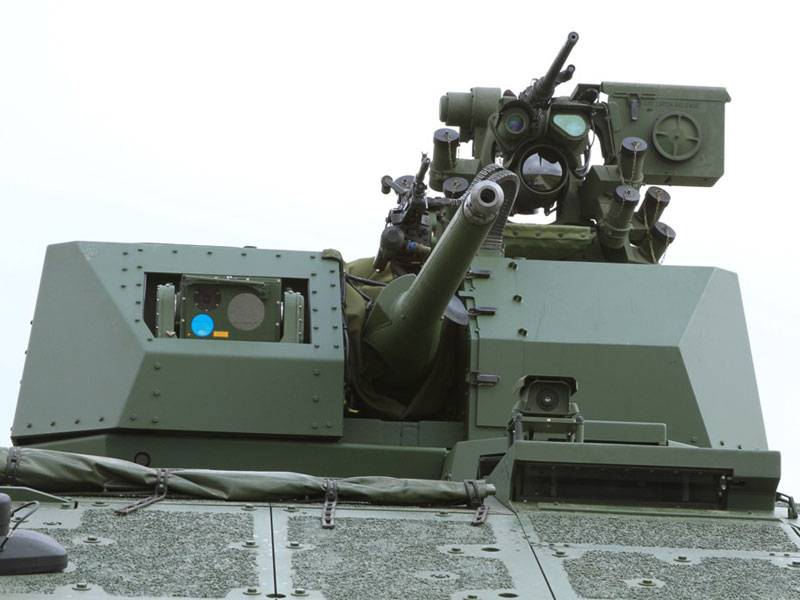
Tower Protector MCT Norwegian company Kongsberg
In addition to the gun in the tower Protector MCT, you can install a smoke screen, a paired machine gun, various sensors and threat identification systems, says Willgos. A preliminary analysis of the Kongsberg MCT-30 DBMS project with an Orbital ATK 30-mm cannon was completed earlier this year in Norway.
The success of Kongsberg in the Stryker program has confirmed that remote technologies are becoming more acceptable to vehicles and there is a good reason to believe that more countries will take this path in the future.
“In an armored vehicle, the gunner-gunner is an important element and, at the same time, it is extremely vulnerable. To enable effective work from the protection of armor cars - that was the basis for the development of remote weapon systems, - added Willgos. “The available remote technology is not yet fully used, but we expect that trends in this direction will continue and the development of a system with a greater level of autonomy will continue.”
There are questions
The Italian concern Leonardo (formerly Finmeccanica) offers the uninhabited version of its Hitfist tower family, designated OWS (Overhead Weapon System). The company says that it can be installed on any wheeled or tracked vehicle, and its main weapon is the 25-mm or 30-mm gun.
Uninhabited tower Hitfist OWS Italian concern Leonardo
The concern Leonardo also reported that the system can be remotely controlled by one or two crew members. However, it is considered necessary for the operator to access the OWS tower through a special hatch, which allows you to have a direct all-round view of the battlefield, load ammunition load or perform simple maintenance.
It all depends on the personal preferences of the military. In the case of smaller smaller armored vehicles armed with an 5,56-mm or 7,62-mm machine gun, the operator may be happy to sit inside the hull and look outside using the camera system. But in the case of a larger tower with a 20-40-mm cannon with longer range, the operator may want to inspect the battlefield with his own eyes in order to better assess the current situation.
Consequently, when developing remotely controlled towers, manufacturers will have to decide the following issues: whether to provide space for the operator and to allow it to move to the tower with a sunroof, so that if necessary it is possible to assess the situation outside the car; whether large towers should be completely uninhabitable; and whether it is necessary to sacrifice the level of crew protection in order to preserve the full capabilities of the machine.
Oikun Eren, technical director of weapons systems in the Turkish company FNSS, said that the remote-controlled towers have several drawbacks. For example, since the crew is housed in a hull, it is completely dependent on sensors and opto-electronic systems, in contrast to the traditional two-seat layout, when the observation can be carried out from the highest point of the vehicle or through the periscope. This "provides an important advantage in the context of situational awareness."
Along this path follows the company FNSS, which develops a modular tower system called Teber, which can be offered both in the uninhabited and in the habitable version with weapons of different caliber. The prototype Teber turret in a double configuration is armed with a 30 / 40-mm chain-driven MK44 cannon and has a fire control system that allows you to fight targets in a search and strike mode.
Advantages in weight?
Eren also disagrees with the argument that remote towers have an advantage in mass compared to inhabited towers. It’s true that uninhabited systems eliminate the need for turret baskets, crew seats, hatches and periscopes, but on the other hand, you must now install two seats for the commander and the gunner in the hull along with the equipment they need, such as displays.
“The trick is that reducing the level of protection for an uninhabited tower allows for a reduction in the total mass,” he continued. “When the crew is inside the hull and you have the opportunity to lower the levels of protection, then you can significantly gain weight by installing a remote tower instead of an inhabited one.”
“Deciding which tower to install, habitable or remotely controlled, should be based on the configuration and tasks of a particular machine,” said Eren. For example, remote towers could be a good solution on commander platforms, where more space is needed for jobs, etc. It would also be suitable for a reconnaissance platform with a variety of optical and opto-electronic systems.
However, for the BMP in its pure form, fighting "on an equal footing with enemy machines, the twin turrets give greater situational awareness, and control over the battlefield makes it possible to get a decisive advantage." This is also true for reconnaissance vehicles, which theoretically have the ability to fire on the enemy.
In the medium-caliber segment, FNSS offers a completely new system — a single Saber turret armed with a M242 Enhanced Bushmaster 25-mm chain-driven cannon and a twin machine-gun 7,62-mm. Saber Tower was chosen as an unnamed country from the Middle East. "Also recently tested the Saber tower at a customer from the Middle East, and soon we expect a positive decision," - said Eren.
Towers vs. drones
Robotic vehicles have changed the face of hostilities. This has a twofold effect on the design of the towers: first, forcing manufacturers to look for better ways to destroy unmanned aerial vehicles (UAVs); and second, companies are analyzing the possibility of future integration into robotic tower technology machines.
“The new goal today is the drone,” says Olivier Leke, head of the development of tower systems at Nexter. “If you want to destroy a drone, it’s not so easy.”
He believes that in the future the market for medium-caliber ammunition will surpass the market for large-caliber ammunition. The reason is partly in the fact that medium calibers have an advantage in combating UAVs, which, as a rule, are small targets. A special place here is occupied by air explosive shells, which are, for example, part of the CTAS 40-mm weapon system with telescopic ammunition of the company CTA International.
CTAS 40 mm armament system with telescopic ammunition from CTA International
“It’s impossible to destroy a large-caliber drone,” he continued. - This is an advantage of the 40 caliber mm. That is why the market for medium caliber ammunition will be more important in the future than the market for large calibers. ”
Lead engineer of the CV90 project at BAE Systems, Dan Lindell, stressed the importance of air strikes, automatic tracking systems and other automatic systems to combat unmanned systems.
“UAVs are already widely used, and I suppose this is just the beginning ... you have to shoot them down. Therefore, more and more turret systems will follow the path of the CV90 armored turrets, to which anti-aircraft capabilities have been added over time, ”he said.
However, it is likely that in the future the elements of tower technology will be included in the uninhabited systems themselves. Richard Muir, director of business development at Lockheed Martin, noted that the Squad Mission Support System robotic support unit was designed to perform a variety of tasks. It would be possible to install a DUBM or a small uninhabited tower on it. "There is no reason not allowing you to install weapons on it in the future."
David Koftri, commercial director of CTA International, said that he “can present a machine with a very low profile with a turret armed with our gun, controlled automatically or remotely,” although this refers to a not very near future.
In sight
Mr. Eren said that one of the main areas of technological development in the past decade has become sighting systems with panoramic sights for the commander and advanced automatic target tracking systems that were once available only on tanks, and "are currently being integrated into the medium-caliber turrets of infantry fighting vehicles."
Also rapidly developed technologies of fire control systems (FCS), whose computers are capable of conducting almost instant ballistic calculations taking into account wind speed, temperature and other factors. The lethality of the towers, which are increasingly being equipped with 30 mm, 35 mm and 40 mm armaments, also increased.
Mr. Leke said that when it comes to comparing manned towers with remotely controlled towers, then “at this stage the ability to see directly is very important, since the quality of perception of the human eye is better than that of any sight”. However, he noted that this could change in the future, as technology continues to evolve. "In five to six years, the situation may change and the technical vision of computers will improve."
The leading tower in the company's Nexter portfolio is the T40 model chosen by the French army for its prospective reconnaissance vehicle Jaguar. This model is already installed on the VBCI-2 armored vehicle (Véhicule Blindé de Combat d'Infanterie), where it is armed with the Cased Telescoped Armament System 40-mm system with telescopic ammunition (see the “Armament of the Tower” section).
French armored personnel carrier VBCI-2 with T40 turret
BAE Systems Haglunds, the manufacturer of the CV90 BMP, does not see any need for installing an uninhabited tower on the machine. The CV90 project lead engineer at the company said: “We studied a few, but until today there were no requirements from customers in the BMP segment ... On the contrary, the inhabited towers are preferred so far. However, we have no problems in delivering to the customers also an uninhabited tower. ”
Haglunds manufactures several turret models, from 30 and 35 mm to twin 120 mm mortars. Lindell said that both types of towers, both habitable and non-habitable, have advantages and that “if it comes to the survivability of the tower’s crew, then it’s better to lower it in the chassis.” However, when it comes to situational awareness, “yet the eyes and the brain are more perfect than the electronics on board.” Nevertheless, he noted that the company had tried automated systems in such a field as detecting threats and sees here a lot of room for their improvement.
Inhabited towers, such as this single-model Saber, are still very important on the battlefield.
Limited visibility
Malcolm Robinson, chief engineer at Lockheed Martin (LM) UK, agreed that uninhabited towers could impose restrictions on situational awareness. He said that about 10 years ago he participated in a project that provided for the installation of completely uninhabited towers on a machine developed as part of the British Scout program (since then it has developed into an Ajax project).
“At that time, a serious problem really arose, as situational awareness is critical for three crew members (if you consider the driver). Uninhabited towers had a very significant limitation. First of all, if you put a commander, a scout and a driver in the hull, they get a very limited field of view even with modern, stabilized surveillance systems. And although you can provide the crew with information from every conceivable sensor, it will still have very limited levels of situational awareness. ”
“But even if remotely operated towers are not suitable for every scenario, this is definitely the case when autonomous technologies are becoming an increasingly important component of such systems,” continued Robinson. “Automation can cover everything: from information management systems to automatic maintenance.” He said that LM developed the Primary Sight widescreen circular sight for the British Ajax vehicle, which can be replaced with the Kongsberg Protector combat module.
"Therefore, there are many ways to fulfill your needs, you can change the purpose of some of these towers for a number of other tasks, and it's almost like getting the best of both worlds."
Customers of the company still prefer to keep maximum control. Robinson develops his thought: “Quite often, we find out that the user would like a certain level of automation, but, in general, he wanted to be involved in the process and make final decisions. Therefore, they are not too eager to fully automate the processes of target detection, tracking, capturing and firing - they should not take place without the knowledge of the crew. ”
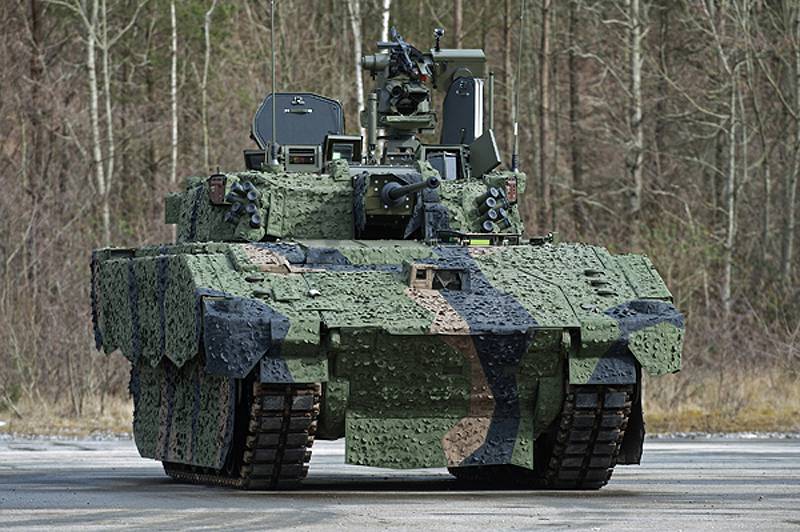
New British armored vehicle Ajax
Program participant
LM UK is leading the development of the towers in two large British combat vehicle programs. This is the WCSP program (Warrior Capability Sustainment Program), in which it is the main contractor and the Ajax BMP program, under which it develops a tower for General Dynamics UK. The two turrets with 40-mm cannons are very similar, down to the level of the subsystems, the main difference lies in the sight for the Ajax machine.
The initial plans envisaged the modernization of the existing BMP Warrior tower. However, during the preliminary analysis of the project in 2014, it was decided that it would be better to create a new combat module for this machine with an automatic ammunition processing system and a CT40 cannon.
According to Mr. Muir, this new tower is offered on the foreign market and the plant in Emphill is working on it.
Not as easy as it seems - the production of towers is a niche business. Lockheed Martin UK organized this assembly line in the British city of Emphill
“The Warrior tower is the basis for the new export tower, which is currently being offered to several foreign customers implementing their large programs, with great support from the British Department of Defense ... we plan to install it on wheeled and tracked platforms,” he explained.
Foreign customers of the company LM UK have requested anti-tank missiles for the turret, although at the moment this is not part of the tactical and technical requirements for Ajax or Warrior. A medium weight vehicle typically has a 30 or 40 mm caliber cannon with a valid 1500 meter range. The addition of an ATGM would allow these vehicles to "fight heavy armored vehicles at substantially greater distances, more than 4 km."
LM manufactures Javelin missiles in collaboration with Raytheon, so "that this is definitely our preferred ATGM offer." Muir said that LM UK had already developed an ATGM solution for one of its customers, although the company could not yet provide more information.
Anti-tank missile complex Javelin
“Since there are many users of the Javelin system in the world, we believe that it will be a very cost effective option for many armies,” he added.
Robinson said that the ability to have additional capabilities like ATGM will be very important in the future "because if the level of threat increased, then we need to exceed this threat."
Tower armament
Weapons with telescopic 40-mm CTAS (Cased Telescoped Armament System) munitions are manufactured by CTA International, a joint venture of BAE Systems and Nexter.
The CTAS system includes a cannon, a telescopic ammunition, an ammunition processing system, gun drives and the necessary electronics. In France, the system will be installed on a promising military armored car Jaguar EBRC, also the CT gun and ammunition are included in the British programs on Ajax and Warrior machines (WCSP).
David Koftri, commercial director of CTAI, said that over the past year he saw an increase in interest in OOBM and uninhabited towers, although the company does not see much difference here, because the CTAS weapon system is able to work in both categories.
Ammunition is one of the main activities of the company. The CTAS armament system includes the GPR-AB air-blasting projectile, currently undergoing a joint British-French qualification, while the helicopter / UAV projectile under the designation A3B is still under development. For the UK and France, the company is also working on a practical shot with a plastic case of reduced range.
“They were tested and tested at shooting ranges, including crew shooting,” he said. - These munitions have passed many tests over the past three to five years. As you can imagine, the qualifications of the two countries are a rather thorough and complicated process. Now we are at the end of this process, that is, we have a gun and two types of projectiles that can currently be used on real machines. ”
Advantages of accuracy
There are, of course, besides high levels of automation, other areas of technological development. Robinson noted here the increased accuracy of ammunition, as well as the armament of direct fire and the development of directional energy.
Lindell drew attention to the development of air explosive ordnance and automatic detection and tracking systems. The aiming systems are also becoming more and more effective, but “another problem has emerged - the rapid development of active protection complexes (KAZ) for machines of potential opponents is underway.”
“How to deal with them? Because anti-tank missiles and similar systems will be useless ... Today they are installed on many systems. We are already resolving the issues of fighting KAZ. ”
Mr. Eren noted that he expects to see new approaches in sensor technologies, data fusion, "which will improve the process of target detection, for example, as in the case of dual-band thermal imagers."
Robinson also noted real progress in sensory systems, saying that distributed sensors, such as those on UAVs, can greatly change the state of affairs. “Therefore, instead of having several long-range sensors, which are also platform-dependent, it is better to have more short-range sensors. You deploy them at the forefront, have the ability to independently control them, receive information from them and distribute it over a reliable broadband network. This concept will be further developed, I believe. "
In the future, tower technology may develop in any direction, although many experts hope to see the increasing use of computers and automation, even if this does not mean a completely uninhabited tower.
Mr. Ehren believes that it would be “logical to expect some intelligent algorithms to help the gunner, such as automatic target detection and identification systems that will classify targets and assign them priority” based on predefined criteria. He also considers the appearance of helmet-mounted displays (standard for modern fighter aviation) and integration with towers of military vehicles.
“Image processing techniques will help to combine images from cameras mounted on the hull and tower, issue them to the shooter’s helmet and update them when the head moves. This will significantly increase the level of situational awareness and control for the shooter. ”
Eren reiterated the development of sensor technology, saying that the integration of new sensors into the SLA will allow the crew to detect the location of the enemy much faster. Acoustic and laser shot detection systems, as well as advanced warning systems for laser irradiation, will be widely used among them.
“I would also not be surprised at the appearance of guided projectiles fired from main armament, because they very effectively hit targets out of sight,” added Eren.
Materials used:
www.kongsberg.com
www.leonardocompany.com
www.fnss.com.tr
www.nexter-group.fr
www.lockheedmartin.com
www.baesystems.com
www.cta-international.com
www.wikipedia.org
en.wikipedia.org
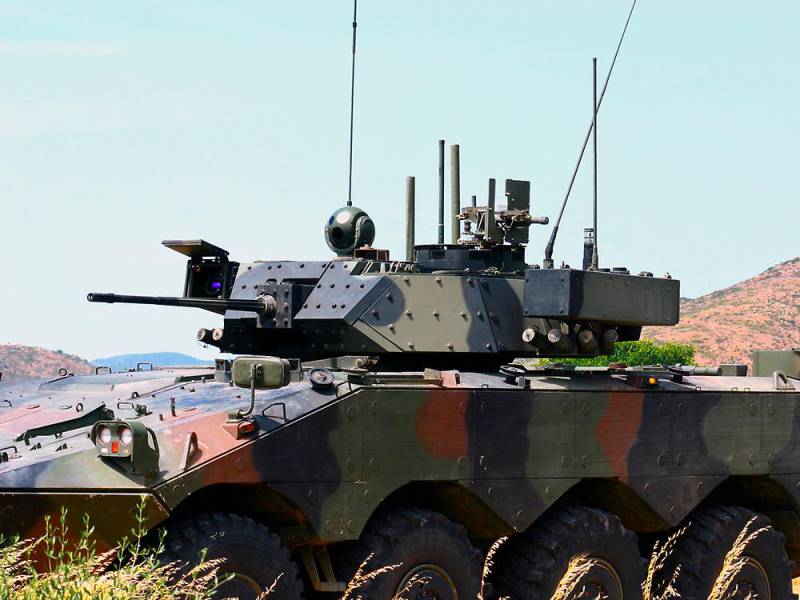
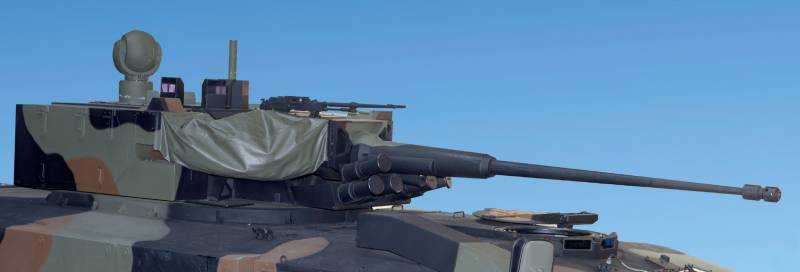
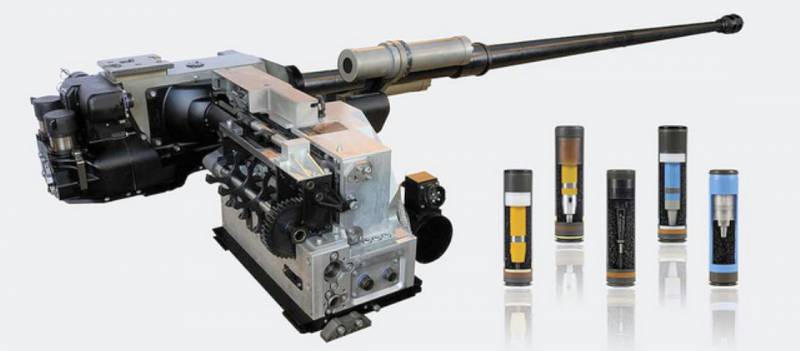
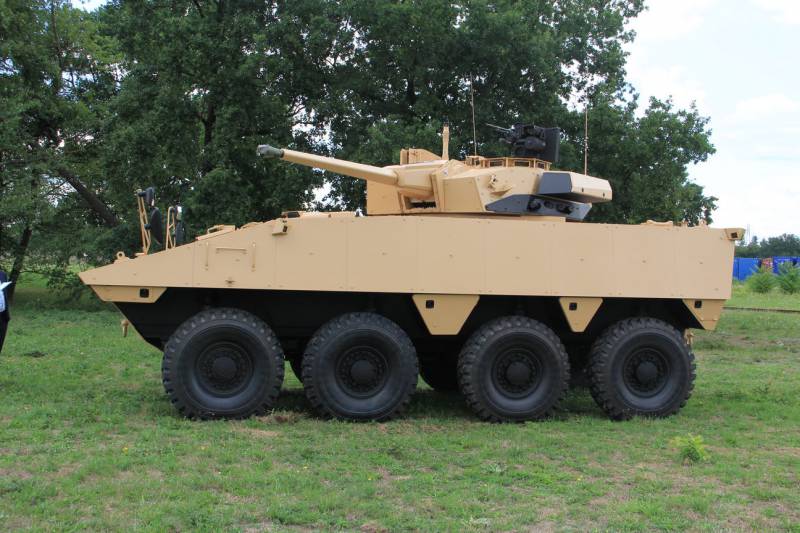
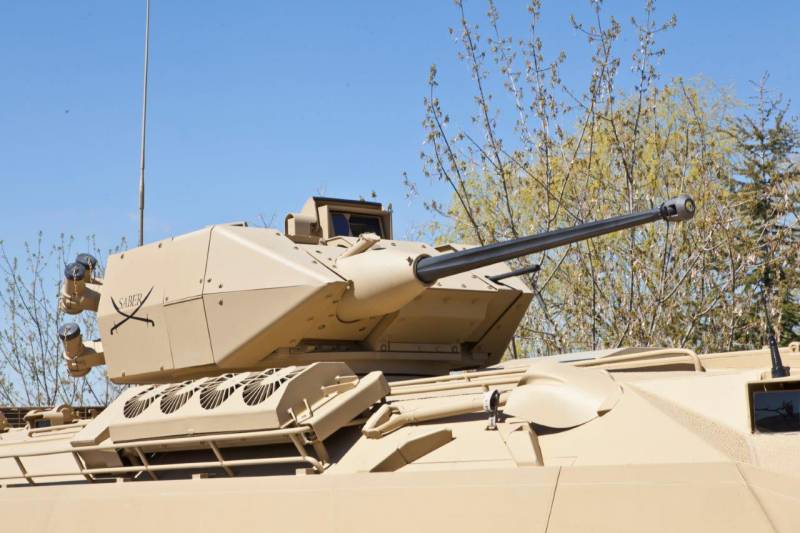
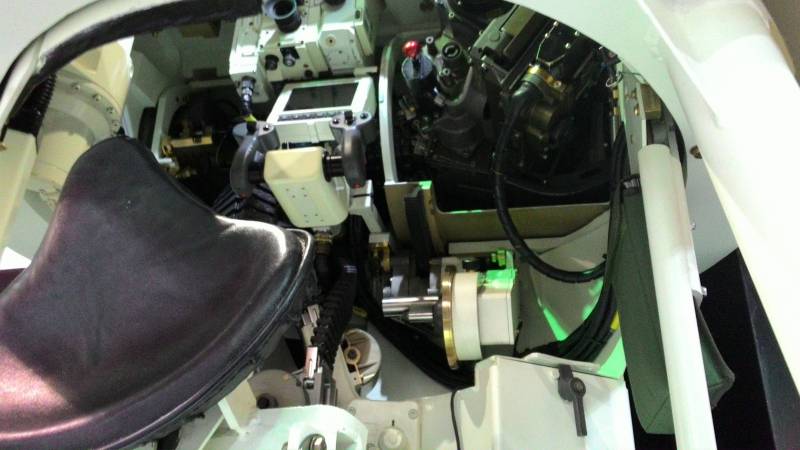


Information